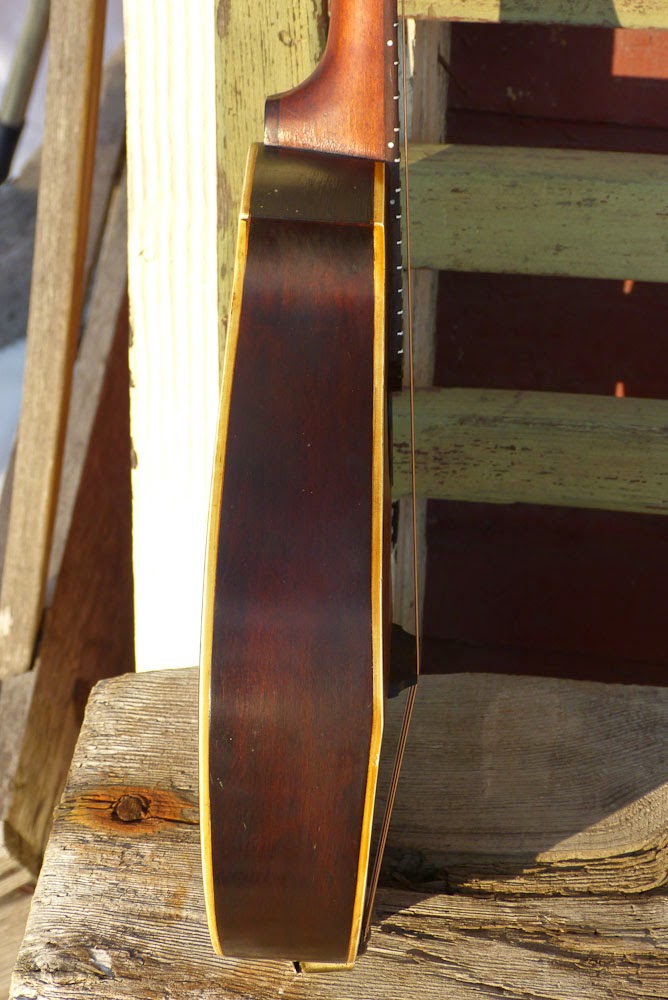1920s Stromberg-Voisinet 2-Point Flatback Mandolin
While this is labeled "Victoria" in the soundhole, this is clearly a product of the Stromberg-Voisinet (in 1930, Kay) factory and follows the stylings of their 2-point guitars and tenor guitars in mandolin form. I worked on a fancy mahogany model in 2010, and like that one, this one has a sturdy feel in the hands and a good, midrange, cutty old-time sound. It's in good shape and all-original except for a new pickguard (which replaced a similarly-styled "aftermarket" pickguard) and a missing tailpiece cover.
Work included bolting the heel (with countersunk evidence at the back of the heel's bottom), giving it a fret level/dress, compensating the original bridge, and a general going-through, cleaning, and setup. At the same time I reinforced a damaged under-fretboard-extension area on the top with a "strapping brace" (thin and wide like a bridge plate) as there were a few hairline cracks under it and to the side of it.
Like most flatback mandos from the time, the top has a "cant" like Italian-style bowlback mandolins that came before them.
The tuners are interestingly-recessed and installed into the middle of the headstock.
Unlike the ebony bridge, the fretboard is simply "ebonized" and made from stained maple. The dots are pearl, though.
Because there's no tailpiece cover, I muted the afterlength of the strings right under them at the end, just like the action of the "chenilled" ends like you'd see on period strings.
While the top is solid spruce, the back and sides are solid birch with a sunburst color. Both the top and back are bound in celluloid.
There's an old few-inch hairline crack that was glued-up long ago. I refilled and sealed it, too, just in case.
Because of the recessed tuners, the back of the headstock was free to get this very cool relief work pressed (or carved?) into it.
While the neck set was decent, I don't trust the dovetails on these instruments. Every time I don't bolt them I regret it as the channels tend to be cut too straight. Therefore I've countersunk a bolt with adjustment access in the soundhole into the heel/neck block. You can see the small "disturbed" patch at the back of the heel in this blown-up shot. It's really not noticeable in person.
Did you spy the other addition? I put some side dots on it.
The headstock binding gives it a rich look, too.
Nice cut to these, huh? I've got it strung with 32w-9 strings where are period-gauged but 34w-10 lights would be OK, too. It's got a typical 13" scale length, though the slightly beefier/wider neck vs. other makes from the time mean it feels more like a Larson flatback in the hands.

















Comments
Question: Did you have occasion to access the tuning gears, that is, taking out the black bakelite (?) plugs from the headstock? I have one of these and those black plugs don't look all too solid (some cracks, etc.) so I've avoided playing with them - because they might turn to dust.
Any words of advice?
- Ed H.